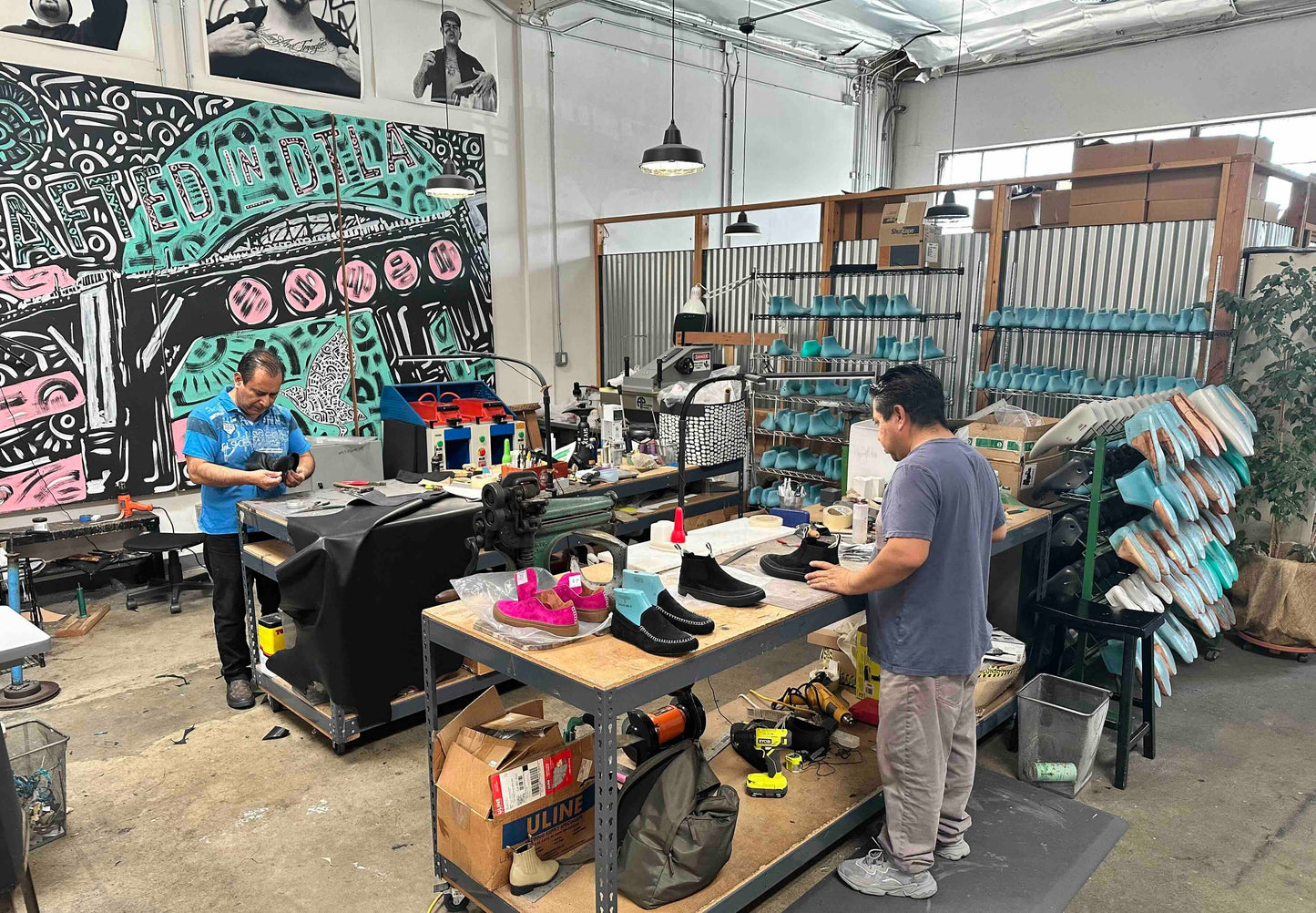
Ever wonder how a pair of basketball shoes turned into a global fashion statement? The journey of sneaker culture is a fascinating ride. It starts on the courts and ends on the streets, runways, and even in glass display cases. Today, rocking a fresh pair of Air Jordans or Nike Air Force 1s isn’t just about sports – it’s about pop culture, identity, and investment.
Let’s dive into this evolution together in a friendly chat about kicks, culture, and how brands like COMUNITYmade fit perfectly into the story.
From Rubber-Soled Beginnings to Basketball Courts
Sneakers didn’t start as style icons. In the late 19th and early 20th centuries, they were simply practical rubber-soled shoes made for athletics. People called them tennis shoes or plimsolls, and their quiet soles let you sneak around silently (hence the name).
By 1917, Converse introduced the All-Star, a canvas basketball shoe with a rubber sole. When player Chuck Taylor endorsed it, the Chuck Taylor All-Star became the shoe for basketball players and teenagers. It was one of the first athletic shoes to cross over into everyday wear, setting the stage for sneakers as a fashion statement.
As basketball gained popularity in the 1950s and 60s, sneakers dug deeper into American culture. Kids wore their favorite athletic shoes off the court to school and on the streets. A pair of sneakers started representing more than comfort – it signaled belonging to a culture.
Still, nobody could predict how big sneaker culture would get in these early days. The groundwork was laid with those simple canvas high-tops and early running shoes, but the real game-changer was just around the corner.
The Air Jordan Revolution
Fast-forward to the 1980s. Basketball is booming, and along comes a rookie for the Chicago Bulls, named Michael Jordan. In 1985, Nike releases the first Air Jordans, the Air Jordan 1, and everything changes. Here’s a basketball shoe that isn’t just about performance; it’s bold, rebellious, and irresistibly cool.
The Air Jordan 1’s red and black colorway famously defied the NBA’s uniform rules, sparking Nike’s “Banned” ad campaign and massive buzz. Suddenly, sneakers are on the evening news, and everyone wants a pair. The Air Jordan 1 transforms sneakers into a pop culture phenomenon, proving that athletic shoes can be legit style icons.
Around the same time, other Nike kicks also cement their legend. The Nike Air Force 1, a 1982 basketball shoe, finds new life on city streets. Its clean white design becomes a blank canvas for expression in urban communities. By the late ’80s, rocking Jordan 1s or fresh “Uptowns” (a nickname for Air Force 1s) isn’t just for athletes – it’s for anyone wanting style and street cred.
Sneakers are now a form of self-expression. You match them with your outfit, feel fly in them, and you might even save that one special pair just to stunt on a night out. The line between basketball shoes and everyday shoes officially vanishes; they’re one and the same, living in the pantheon of pop culture.
Hip Hop, TV Shows, and Sneakers in Pop Culture
No story of sneaker culture is complete without hip-hop. In 1986, Run-DMC laces up in Adidas Superstars and drops the hit “My Adidas,” taking sneaker fandom to the airwaves. This moment marks a turning point, a rap group proudly rapping about their kicks and even securing a sneaker endorsement deal.
Run DMC brings sneakers to the forefront of popular culture, influencing fashion trends and cementing the link between hip-hop and sneakers. From that point on, music and sneakers go hand-in-hand. Hip-hop artists and rappers begin setting trends for which shoes are hot. In the ’90s, you see it with artists like the Beastie Boys in their chunky skate shoes, or later, Nelly rapping about his “Air Force Ones.” Sneakers are lyrics, status symbols, and cultural banners.
Meanwhile, sneakers are all over our screens, too. Think about classic TV shows from the ’90s – remember Will Smith in The Fresh Prince of Bel-Air rocking Jordan 5s and other heat? Those on-screen moments made viewers say, “I need those shoes.”
The Rise of the Sneakerhead
By the turn of the millennium, sneakers become a fashion statement and a hobby all in one. Enter the sneaker collectors, often called sneakerheads. These folks hunt down limited edition releases, line up at dawn for the newest drop, and keep their kicks in pristine condition like works of art.
Sneaker culture has evolved into a full-blown subculture. Sports and hip-hop laid the foundation, and now a new force takes it further: the internet. As social media and online forums rise, sneaker enthusiasts connect globally.
Suddenly, a skater in California and a fashionista in Tokyo can gush over the latest Jordan 1s on Instagram. Pictures of rare Air Jordans, Nike Air Force exclusives, or vintage Chuck Taylor editions spread like wildfire, fueling demand. Collectors show off “shelfies” (sneaker shelf photos) and the resell markets see a major boom.
Collaboration and creativity hit new heights. Big brands notice scarcity drives hype, so they collaborate with celebrities and designers to create must-have editions.
Rapper Travis Scott, for example, partners with Nike to reimagine Jordans and Air Force 1s. His collab sneakers (with unique touches like a backward Swoosh) sell out in seconds and send fans into a frenzy. These limited shoes become cult objects for collectors, commanding insane resale prices.
Every release – whether it’s Kanye West’s Yeezys, Virgil Abloh’s Off-White Nikes, or Travis Scott’s Cactus Jack Jordans – only adds to the fever. Sneaker conventions pop up, sneakerhead documentaries hit Netflix, and even high-fashion runways feature sneakers, validating them as luxury items. What started as simple running and gym shoes has become a multi-billion-dollar collector’s market and a key driver of fashion trends worldwide.
COMUNITYmade in Today’s Sneaker Scene
Limited edition drops still create a frenzy, but alongside the chase for exclusivity, something else is happening. More people are starting to care about what their sneakers stand for, who made them, how they were made, and whether they carry a story worth telling.
It’s no longer just about resale value or celebrity endorsements. It’s about wearing something original—something with meaning. That shift is where COMUNITYmade thrives.
COMUNITYmade is part of that next chapter. We don’t chase trends or flood the market. We focus on small batch manufacturing—producing limited, high-quality sneakers by hand in our Downtown Los Angeles factory.
This approach allows us to create shoes with intention. Every pair is made by real people using premium materials. There’s no outsourcing, no shortcuts, and a portion of every sale goes back into the community.
If you’re looking for something original and sustainable, take a look at what we’re building at COMUNITYmade. Our newest drops are made to last, made with purpose, and made for people who care about more than hype.



